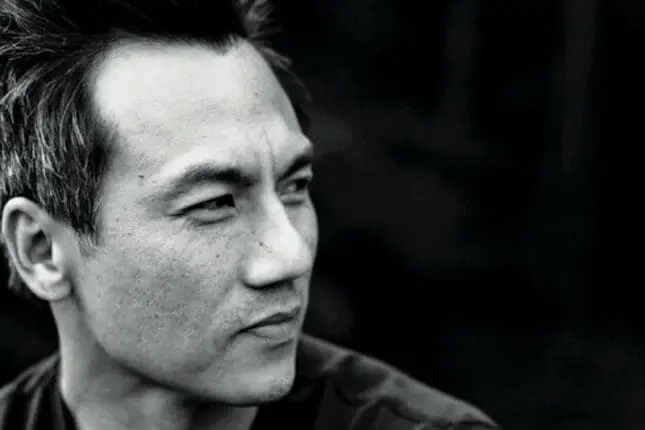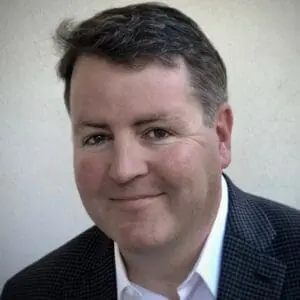How transparent are you willing to be?
For many therapists, the draw of therapy is semivoyeuristic: we can look into the most intimate areas of our clients’ lives while remaining relatively safe in our clinical bubble. We’re there to empathize and facilitate healing, but our own shadows and skeletons remain hidden behind the blank slate.
John Kim, aka “The Angry Therapist,” has developed his practice, several books, and a massive social media following based on the opposite principle: candidness. Kim believes that a therapist’s own vulnerability helps clients feel comfortable enough to bare their own souls—and he practices what he preaches. He’s publicly chronicled his journey through divorce, career change, and internal struggles with his own mental health issues through his blog, social media channels (attracting more than 300,000 Instagram followers), and popular books, like I Used to be a Miserable F*ck and Single On Purpose.
Kim’s unconventional therapy and coaching style feed a loyal fanbase of primarily millennials through his writing, workshops, online courses, and recently developed educational support groups. And no, he isn’t always angry. In his words, “It’s my way of saying I’m human.”
– – – –
Ryan Howes: You began practicing online long before COVID-19.
John Kim: Yeah, man, I started practicing online about 10 years ago, when it was a huge no-no. Although I’m a licensed therapist, I called myself a coach because I thought it was the future, where everyone was going. Working unconventionally, I kind of accidentally became the anti-therapist, although I’m very pro-therapy.
RH: How and why did you become a therapist in the first place?
Kim: I was a struggling screenwriter. I grew up here in LA and was going through a divorce. One day, my therapist said, “What do you want to do with your life if you can’t write screenplays?” I was 35, and I said, “I want to do what you’re doing. If I can’t move people by the masses, I want to do it one at a time. I love psychology.”
He told me to go back to school, but I was a C student; I hated school. And yet, the next thing I know, I’m back in school. What he didn’t tell me about was the 3,000 hours it takes to become licensed.
RH: You wanted to move the masses first through screenplays, and then you decided to do it through individual therapy. Now, though, your work has become so popular that you’re moving people en masse anyway. How did that start?
Kim: I started out hustling, taking on any clients I could, and accepting sliding-scale pay. I didn’t have much money, and I was eating Top Ramen every night. Also, I didn’t have an office.
RH: You were an innovator back then.
Kim: It wasn’t that I was trying to be cool: I was broke and didn’t want the overhead. So I just met clients at the park, at coffee shops. Basically, I did everything you weren’t supposed to do as a therapist at the time.
I started a blog because I was going through a breakup, and I wanted to write out my feelings about it. I called it “The Angry Therapist” because I thought it was kind of funny that a therapist was angry.
I didn’t really think anyone would read my personal ramblings, but then people actually started to. I wasn’t presenting myself as the classic stereotype of a therapist in an office with the wrinkle-free pants and meditation bowls and horrible art on the wall. I wanted people to see me, not the letters after my name.
Eventually, I found CrossFit, bought a motorcycle, got tattooed. I was going through my own rebirth at 35, and documenting it. That got me an even bigger following. People started emailing me every day, wanting sessions.
A big part of my work as a therapist is emphasizing casual over clinical because it feels authentic to me. That means I’m not the right therapist for everyone. But I noticed that when I was working in clinical settings, tucking in my shirt and pulling from the generic-interventions cabinet, I felt like Clark Kent pushing a mail cart. And when I came home and did my own thing as a therapist, seeing individual clients at night, I felt like I had a cape.
It was still terrifying. I got fired from places. There was pushback. But then came the influx of clients and the book deals. And the podcast is growing.
RH: I think a lot of clinicians gravitate toward a more clinical style because they feel that sets a boundary, protects them.
Kim: I choose casual over clinical, but I’m not going to hang out with clients and drink beers. I have to be extra careful, given the way that I work, but the value of it is that the guards come down, and it’s easier to build trust.
If you go on Psychology Today’s directory and just pick a therapist, you have no idea what that person is like unless they’re active on social media and give you a sense of how they live, their struggles. I think choosing a therapist based on that is more powerful than choosing them based on a résumé. How do you have an authentic relationship with any human if you’re hiding behind a veneer of anonymity?
RH: We’re both Gen X, but I know that millennials are very into you.
Kim: When I was growing up, I was really into Dr. Drew. I used to take the long way home from parties to listen to Loveline in my car and geek out at it. I liked him and respected him because he was older and wiser. If he were 18 when I was 18, I wouldn’t have bought into anything he said. So maybe for the kids today who watch and listen to me, it helps that I’m older, at 47. It helps, too, that I’m interested in the intersection of tech and wellness. I recently started a project called the TAT Lab. It’s kind of like ClassPass, but for mental health. You’re not watching a video: you’re engaging with live groups and learning about everything from codependency to trauma to all the stuff needed to build healthier relationships.
RH: You talk about serving self-help in a shot glass.
Kim: It’s just my way of bringing mental health awareness to the street level. I’ve always been an everyman. I never went to an Ivy League school; I’m not an academic person. I enjoy taking concepts that are dense and complicated and translating them into common language. I think people use jargon to hide behind it.
RH: You’ve talked about being a 29-year-old boy. What was that like for you?
Kim: When I was growing up, my Korean parents were never home. They were just concerned about getting food on the table. Being American to them just meant making sure that their kids wore designer jeans and other popular American stuff. So in some ways, I feel like I was raised by pop culture, rather than emotional milk from my parents. I grew up in locker rooms and on a skateboard outside. No one showed me how to be an adult, a man. I didn’t make my bed. I peed in the shower. I ended up angry, emotionally immature.
Then I spent five years working with teenagers at nonprofit agencies, and I realized that we live in a fatherless nation. I treated thousands of kids whose dads were absent, either physically or emotionally. It factored significantly into why so many of them were struggling with addiction. The boys I treated either wanted to be me or fight me. They related to me, because I was essentially one of them. But during that time, I went through a reevaluation of what it means to me to be a man, and my book I Used to be a Miserable F*ck came from that experience.
RH: You’ve mentioned that in some Asian cultures, seeking therapy is considered shameful. What was it like to decide on therapy as a career in your Korean-American household?
Kim: I was already pursuing screenwriting, which isn’t really a career in my parents’ eyes. So becoming a therapist was better. When I started working as a so-called psychologist, even though I didn’t have a PhD, they could brag to their friends that their son was a doctor. I’d always remind them that I’m not a doctor, and they’d just say, “You are.”
More importantly, I’m trying to destigmatize therapy for people in the Asian-American community, but I’m not doing that by preaching, and not through telling people what to do. I think the most powerful way to set the example is to be the example: to share your story, which means sharing your struggles.
RH: What is living a “through-me” life?
Kim: People often find themselves in one of four modes (and I’ve been in all of them): to me, by me, for me, and through me.
To me is victim mode. It’s “he dumped me,” or “she left me.” It’s the most powerless stage. By me is all ego. “It’s my way or the highway.” It’s unsustainable; you kind of create your own island. Then you get to a place where you actually feel you deserve something—that’s for me. “I deserve this motorcycle ride. I deserve this orgasm. I deserve this donut.” And then the highest and most power-filled stage is through me. That’s when you believe there’s something exciting about you, something bigger than you, working through you. It’s more of a spiritual plane. And I think that’s where you hit flow stage in life. That’s where you have the least amount of dread, worry, and anxiety because you’re not making it about you. That’s where I try to swim toward. I feel I’m more in for me and through me these days. In my 20s and 30s, I was in to me and by me. Either I was a victim, or I was very angry.
RH: You’ve got another book coming out, right?
Kim: It’s called Single on Purpose. It came from finding myself coaching people, mostly women in their 30s, about dating and relationships, and them being frustrated because they don’t have a partner, feeling they’re somehow worthless. This book is about how it’s okay to be single. It’s not an anti-relationship book: it’s a pro-relationship-with-yourself book.
RH: Are you married?
Kim: I was single for about five years, and then had many relationships for multi-year stretches. I’ve been with my current girlfriend for about three years. We have a baby together.
RH: What does the Angry Therapist have to say about how therapists can grow?
Kim: In a nutshell, show yourself! If you don’t, you’re going to burn out. You’re not going to like being a therapist because the loneliness of it will get to you. I encourage therapists to use social media, podcasts, and any tools they can to reach more people. Especially today! Why would you not? I talk to myself twice a week in my garage on a Nikon microphone, and it’s reached more than five million people. It’s something as simple as that.
RH: Many therapists like to stay more anonymous; they want to keep their personal lives private.
Kim: My girlfriend and I just launched a podcast called It’s Not Me, It’s You. It explores the misconception that therapists have all their shit together and are perfect in relationships—which isn’t true. We pull the curtain back and talk about our issues. It’s messy, and the hope is that people can learn from it.
Listen to John’s podcast
PHOTO COURTESY OF JOHN KIM
Ryan Howes
Ryan Howes, Ph.D., ABPP is a Pasadena, California-based psychologist, musician, and author of the “Mental Health Journal for Men.” Learn more at ryanhowes.net.













